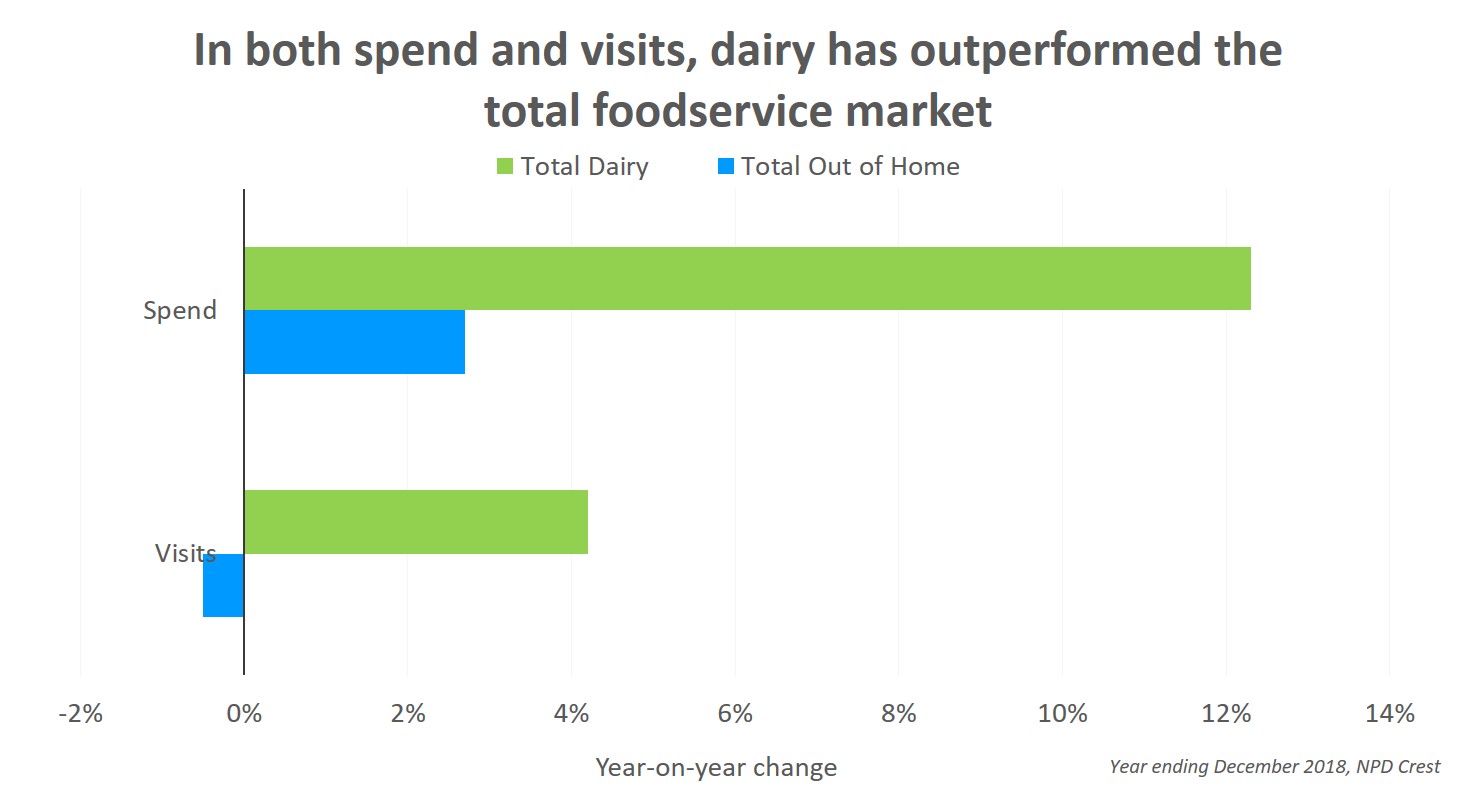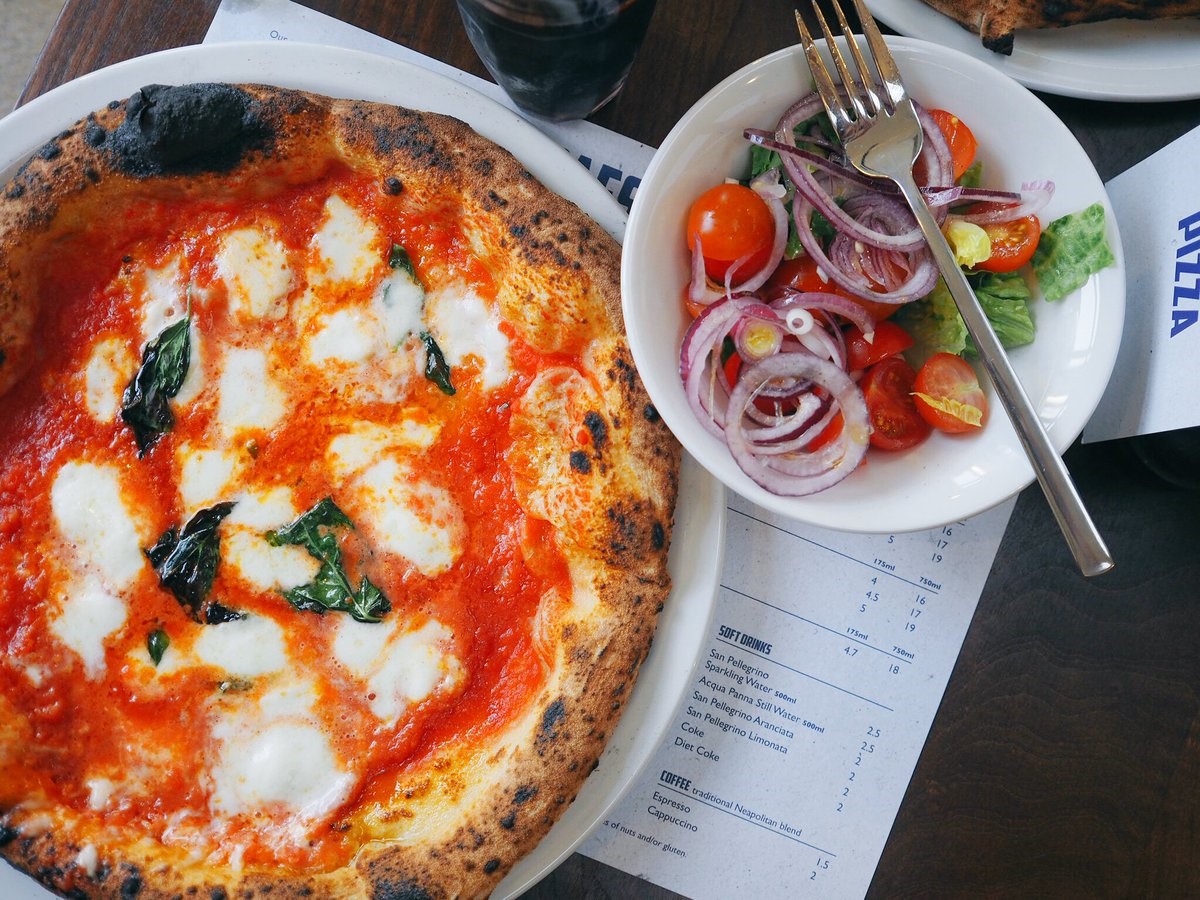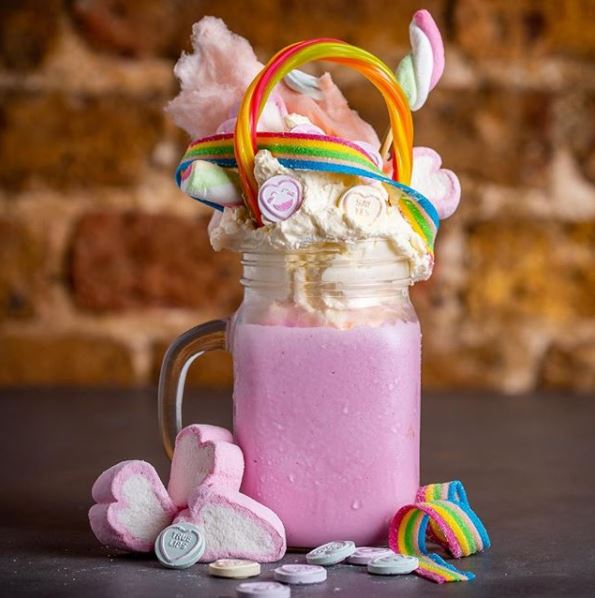Dairy shakes up the foodservice market
Tuesday, 4 June 2019
Against a background of faltering foodservice sales, dairy is outperforming the market and has increased its sales year-on-year. Consumer confidence is weighing down the overall eating-out market but dairy’s inclusion in popular dishes such as pizza and cheeseburgers is helping to buoy its performance.
Uncovering dairy’s role in foodservice is not straightforward. Although some dishes are clearly dairy (for example, yogurt), dairy most often appears as a component of a ‘host meal’ such as a sandwich, or hidden in the cooking process, such as in cakes or chocolate. AHDB has worked with NPD Crest, which collects panel data on food and drink occasions in the out-of-home market, to estimate the size of the market based on the types of dishes and drinks being purchased.
Dairy featured in just over half of all foodservice visits in 2018, according to our estimates, growing by 233 million visits year-on-year, hitting 5.8bn occasions. Spend on dairy dishes in foodservice was boosted by 12% to £16 billion, outperforming the total foodservice market, which struggled as consumers cut back on eating out. Dairy has a strong association with casual, value-for-money occasions, which is a key advantage in a difficult market.

In most instances, dairy isn’t consumed alone so its performance is closely related to the performance of its ‘host meals’. In foodservice, 43% of dairy servings are host meals, with the top four dishes (cheeseburgers, sandwiches, baguettes and pizzas) representing 30% together. Cheeseburgers alone clocked in 800 million servings in 2018, making them the single biggest dairy item in foodservice.
We know that when consumers are choosing where to eat out, convenience and the quality of food/specific craving are the two biggest motivators of choice. Burgers and pizzas are examples of dishes that, although they feature at omnipresent high-street chains, have also seen innovation in new openings that target budget-conscious but quality-driven consumers. Franco Manca in England, and Paesano Pizza in Scotland offer Neopolitan-style sourdough pizzas at prices of £8 and under. With short menus and long queues, their simple but well-executed offering has proven a hit with diners.

It has also been a strong year for dairy desserts, with ice cream and cheesecake growing servings by 1.5% and 13.7%, respectively, despite the overarching trend of seeking healthier food. Eating out remains strongly associated with treating, so even health-conscious consumers can be tempted to indulge. We are seeing growth in the number of dessert parlours opening; MCA Insight forecasts that 86 new sites will open in 2019. These establishments provide an alternative location to socialise for younger, more teetotal audiences, with late opening hours and extravagant, highly ‘instagrammable’ desserts.
Drinks
Drinks are a key category for dairy in foodservice as the volume of milk per serving is comparatively large. In 2018, there were 1.3 billion servings of hot beverages with milk*, up 6.3% on the previous year. Lattes and cappuccinos make up the bulk of these, together accounting for over a billion servings. Cold dairy drinks, which have most appeal among families, had 244m servings in 2018, up 6.2% on the previous year. Milkshakes, which make up nearly half of cold dairy drink servings, had particularly strong growth.
Day parts
Dairy currently undertrades in food-to-go but eating out at lunchtime fell out of favour in 2018, as consumers looked to cut costs and made more use of lunchboxes. However, compared to the total out-of-home market, dairy products have their strongest performance at breakfast time, where they feature in yogurts, toast and baked goods. Dairy undertrades at dinner occasions where the right products and dishes could help to grow dairy’s share of the dinner market. Dinner occasions are strongly associated with treating, celebrating and socialising; indulgent experiences and sharing dishes could help to boost dairy’s performance at dinner.
*We estimate that 10–12% of hot beverages with milk were made with plant-based milk alternatives.
Related content
Topics:
Sectors:
Tags:



